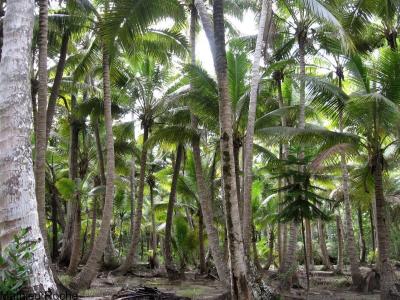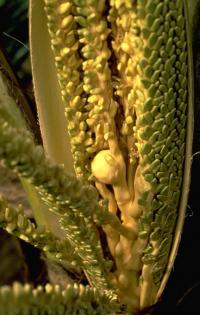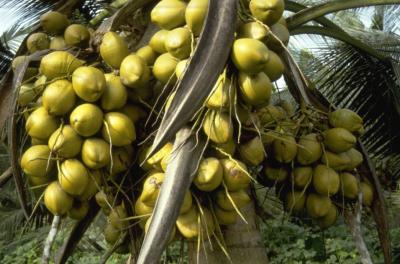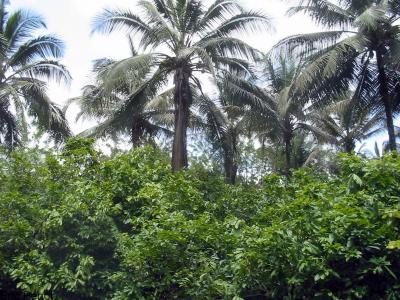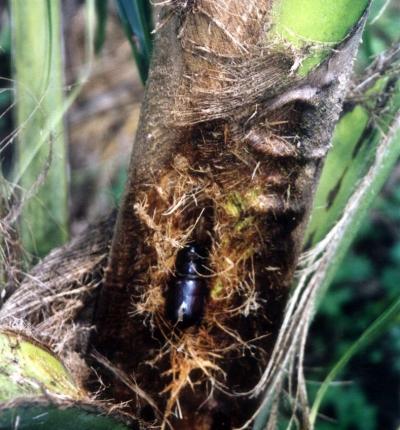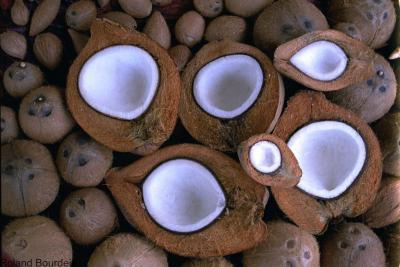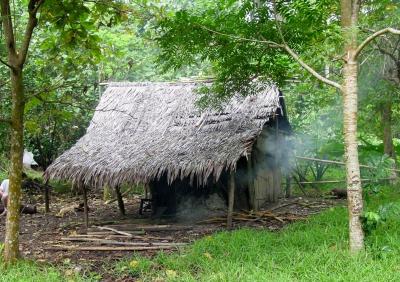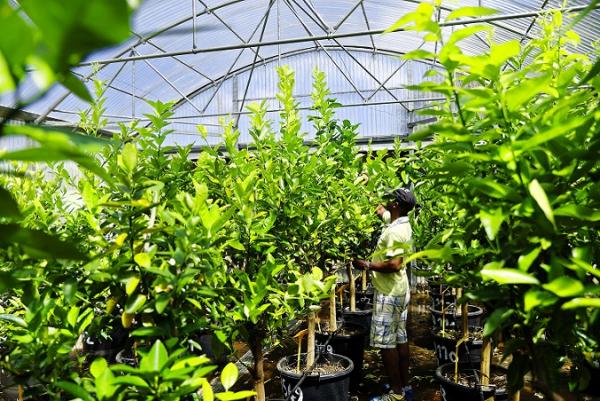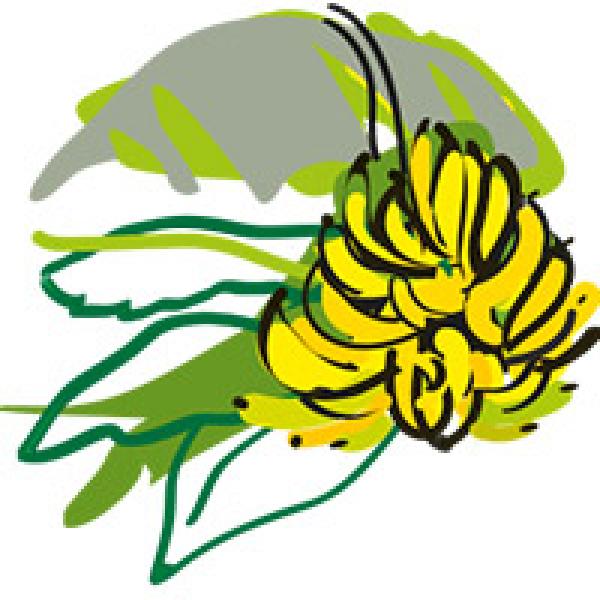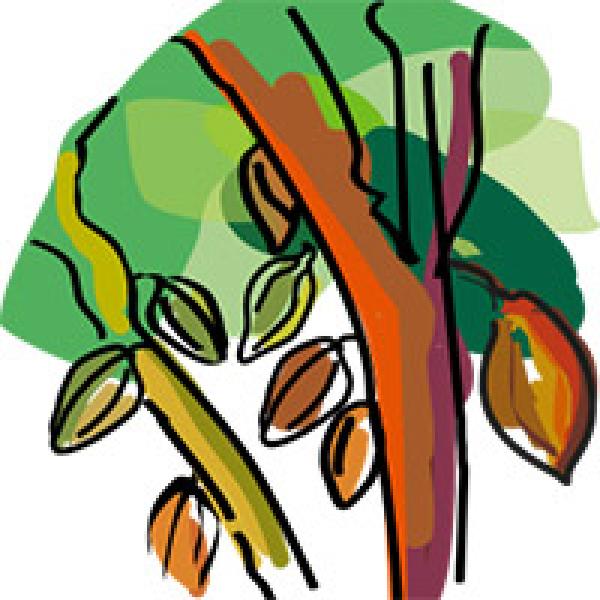- Home
- Our activities, our impact
- Tropical value chains
- Coconut

Coconut
Coconut is a large palm that fruits all year round. It is grown throughout the humid tropical zone, particularly in coastal regions but also up to 1000 metres above sea level. It is often grown in places that are difficult to use for other crops. Coconut is of vital importance for millions of growers and has many uses: fresh coconuts, food oil, building material, fuel, etc.
Coconut, tree of life
Coconut, Cocos nucifera, from the Latin nux (nut) and fero (I carry), is a large palm of the family Arecaceae. It grows in the subtropical coastal regions of Asia (India, Philippines, Sri Lanka, Thailand, Indonesia) and Oceania, where it originates.
The leaves, or fronds, are emitted continuously from a single terminal bud (the heart). Coconut palms have a crown of around thirty green fronds. Each frond is 4 to 7 metres long and has around 200 leaflets either side of the rachis.
The stem grows vertically non-stop. The more stripes it has, the older the palm. The base starts from an inverted cone, called the "root bulb", from which 3000 to 5000 ramified primary roots branch out, anchoring the palm in the soil to protect it from strong winds.
The inflorescences comprise spikelets bearing female flowers at the base and male flowers towards the tip. The fruits, which develop in the axil of each frond, are known as drupes, or more commonly "coconuts".
The nuts comprise a smooth epidermis whose colour depends on the variety and the stage of ripening, covering a thick fibrous layer, known as the "husk". It is this fibrous layer that covers the actual seed: a nut with a very hard shell. The shell surrounds the albumen, an oil-bearing kernel of varying thickness. It also contains a sterile liquid known as "coconut water". This is the nut's fresh water reserve, which enables it to germinate regardless of the outside conditions: salt water, deserted beaches, etc, provided the temperature is right, obviously. Two varieties, the Macapuno from the Philippines and the Kopyor from Java, do not produce albumen but a jelly that completely fills the nut. Their nuts are highly sought after for making desserts.
The 710 known coconut varieties worldwide differ in terms of their morphological characteristics and degree of adaptation to a range of ecologies. For researchers, this diversity is an asset that can be put to good use in breeding disease-resistant varieties and hybrids. The different varieties are kept in living collections in the 38 countries making up the COGENT network (International Coconut Genetic Resources Network).
Dwarf and Tall coconut palms
There are two main types of coconut palms: Dwarfs and Talls.
Dwarf coconut palms rarely grow above 12 m tall. They begin fruiting four years after planting and produce small nuts. They are easy to harvest due to their small size. Moreover, Dwarfs are often used as mother palms when producing hybrids. They fruit early but are more fragile, and are often planted near dwellings. The nuts come in a range of bright colours: yellow, orange, red, bronze, brown and green.
Tall coconut palms can grow up to 25 or 30 m tall. They produce larger nuts, begin fruiting seven to ten years after planting and remain productive for up to 100 years.
Coconut, a plant that fruits all year round
The land on which coconut is planted is of little importance. It can be grown on the seashore, on poor sandy soils, where it finds the sunshine and salt winds it likes. It can even be fertilized with salt, which has a beneficial effect on kernel size. Coconuts are easy to germinate: they can simply be placed on the ground or, better still, half-buried after cutting a split in the husk. Depending on the variety and growing conditions, coconut palms begin fruiting between four and ten years after planting, and they grow, flower and fruit all year round.
Once completely ripe, the nuts fall off the bunch onto the ground, where they are collected regularly. There are usually six harvesting rounds a year, but on smallholdings, the frequency is governed by events: boat services to the island, the need for cash for a new school year, for specific purchases, etc. However, since germination begins as soon as the nuts fall, harvesting too late results in a high proportion of unusable germinated nuts.
Coconut palms are often grown with other crops such bananas, cloves or cocoa, not forgetting all the different food crops traditionally grown locally. Near dwellings, it provides shade for growing vegetables and medicinal plants.
Pests and diseases
Coconut palms suffer from numerous pests and diseases. Insects attack the terminal bud, fronds, stem, roots, inflorescences and fruits.
Parasitic fungi such as Phytophthora katsurae and P. palmivora cause rotting of the unripe nuts and terminal bud in Southeast Asia, Africa and the Caribbean.
Rats and coconut crabs can also severely damage nuts, and groups of wild boars can destroy young plantings in a single night.
A disease, lethal yellowing, caused by a microorganism called a phytoplasma, causes considerable damage and has destroyed many coconut plantings worldwide.
Travellers have often taken coconuts with them on their tropical sea voyages, not only to plant around their future dwellings, but also as a "long-life" food and drink. Coconuts are rich in nutrients and minerals, and are a choice food that keeps for a long time without deteriorating.
Fresh coconuts contain a very wholesome food, the immature kernel. This is a water- and sugar-rich gel that develops inside the nut eight to nine months after fertilization. Ripe coconuts, a year after fertilization, are often the only source of vegetable fat for tropical populations. Coconut water, which is rich in minerals and sugars, is clear, fresh and sterile. In some regions, it is a supplementary source of drinking water. It has saved the lives of many "Robinson Crusoes", adventurers and victims of shipwrecks or natural disasters, by providing them with emergency supplies. Ripe kernels are either eaten fresh, or processed: desiccated coconut, powdered coconut or coconut flour. Coconut milk is made by grinding the mature kernel finely, adding water and pressing the mixture. It can be concentrated to make coconut cream, the basis for other preparations such as coconut jam, or dulce de leche in Argentina, coconut syrup or coconut honey.
Copra oil and virgin coconut oil
Copra oil is extracted from crushed copra. Copra is the kernel of dried ripe coconuts. The nuts are dried in small ovens, primarily by smallholders. Copra is generally produced at the site where the nuts were harvested. It is a long drawn-out process, generally done by hand with very little mechanization, that produces a stable product that is easy to store and transport. The oil is extracted from the copra by conventional crushing (using powerful presses). This crude oil is not edible as it is, and has to be refined before it is suitable for human consumption. The remaining copra or presscake is used as animal feed.
The oil is classed as a lauric oil (39 to 54% lauric fatty acids). It is rich in highly saturated short-chain fatty acids, and has a reputation for being less healthy than other vegetable oils. However, it is widely used in the food industry, as a cooking oil blended with other vegetable oils. It is also used to make salad oils, margarines and shortening. It is the traditional cooking oil in Southeast Asia and the Pacific. On islands where fuel is expensive, coconut oil is sometimes used in diesel engines, with certain modifications.
A virgin oil can also be made by centrifuging coconut milk. It is clear and has all the flavour of the fresh nut. There is a growing niche market for this product, and its fans appreciate its many properties against obesity, hypothyroidism, diabetes, skin ageing, cholesterol, etc.
Palm cabbages, palm wine and other products
Palm cabbages, or palm hearts, are very popular: they can be added to salads, and are crunchy, with a sweet, nutty taste. Coconut sap, which is extracted by cutting the inflorescences, is a refreshing and nutritious drink that is rich in sugar. If left in the open, it ferments within a few hours to make a slightly alcoholic palm wine, which is very popular locally. A stronger spirit can also be made by distilling palm wine. In Indonesia, the sap is also used to make coconut sugar (brown sugar).
The fronds are used to make roofs, fences and wickerwork utility items: baskets, hats, partition walls, etc. The stem and its derivatives are used to build houses and for craftwork. The coconut husk is a traditional, strong raw material used to make ropes, nets and coarse fabrics. The hard, very dense shell is a valuable craft material, for both decorative and utility items. It is also used as a fuel and to make activated charcoal.

























